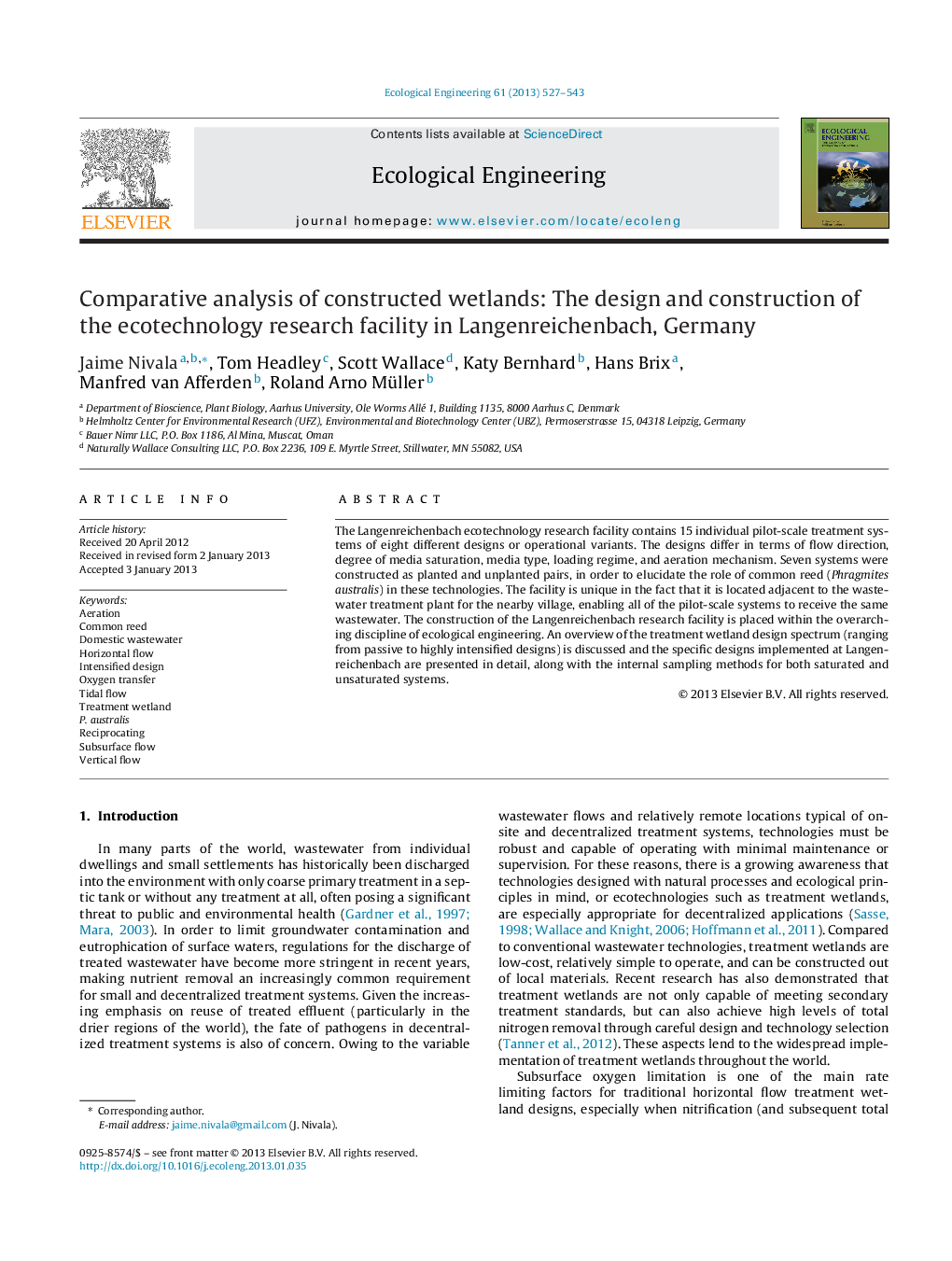| Article ID | Journal | Published Year | Pages | File Type |
|---|---|---|---|---|
| 4389521 | Ecological Engineering | 2013 | 17 Pages |
•The ecotechnology research facility in Langenreichenbach, Germany contains 15 individual pilot-scale treatment systems from eight of the most commonly implemented treatment wetland designs.•We provide insight into the design, construction and operation of the pilot-scale ecotechnology research facility.•Technical diagrams for each system design are provided and explained in detail•We discuss the pertinent issues related to design and installation of internal sampling equipment for saturated and unsaturated treatment systems.
The Langenreichenbach ecotechnology research facility contains 15 individual pilot-scale treatment systems of eight different designs or operational variants. The designs differ in terms of flow direction, degree of media saturation, media type, loading regime, and aeration mechanism. Seven systems were constructed as planted and unplanted pairs, in order to elucidate the role of common reed (Phragmites australis) in these technologies. The facility is unique in the fact that it is located adjacent to the wastewater treatment plant for the nearby village, enabling all of the pilot-scale systems to receive the same wastewater. The construction of the Langenreichenbach research facility is placed within the overarching discipline of ecological engineering. An overview of the treatment wetland design spectrum (ranging from passive to highly intensified designs) is discussed and the specific designs implemented at Langenreichenbach are presented in detail, along with the internal sampling methods for both saturated and unsaturated systems.
Graphical abstractFigure optionsDownload full-size imageDownload as PowerPoint slide
